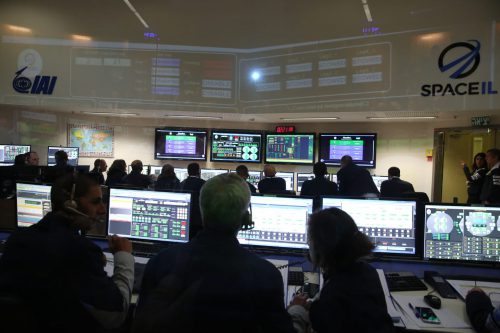1 SpaceIL engineers and the aerospace industry will investigate the malfunction, and we have protected the navigation system from sudden reboots * SpaceIL CEO Dr. Ido Entabi: We are continuing our way to the moon. The next maneuver - in about a week

SpaceIL and IAI engineers overcame the malfunction that prevented the maneuver of raising the Bereshit spacecraft to a higher orbit on its way to the moon about three days ago. After the completion of the tests and examination of the boot phenomenon in the mission computer, and also the implementation of protection mechanisms, a successful maneuver was carried out tonight (Wednesday 28/2/19) at 21:30.
The Beresheet spacecraft is currently in an orbit where the farthest point from Earth is approximately 131 km away. The maneuver was carried out according to the plan, during which the main engine of Berashit was activated for about four minutes. The next maneuver is expected in about a week.
In a press briefing held through a conference call, SpaceIL CEO Dr. Ido Antavi stated that: "As we all know, a malfunction occurred on Monday when we tried to perform a maneuver in which we wanted to raise the orbit of the spacecraft from 70 at its height to about 130 kilometers. The malfunction was caused by the initialization of the mission computer in the pre-maneuver phase. The SpaceIL and IAI team worked to find the source of the reboots and understand how the navigation control software can be immune to such reboots. We performed the maneuver successfully. We are in an elliptical orbit with a maximum altitude of 131 kilometers after running the main engine for four minutes. "
"Our teams are investigating in depth the performance of all the components in the spacecraft, but in general the spacecraft is functioning excellently and we are continuing our way to the moon. Staying in space is a challenge, some of the malfunctions stem from the space environment itself."
In response to a question from one of the journalists, Dr. Antavi added: "There is currently no delay in the landing date, we will continue to walk on this route for about a week, we have a few more good BUFFER days, I hope we won't have to use them." There are over a month until we reach the maneuver where we will have to perform a moon capture, which is a very complex and challenging maneuver. In general, the whole issue of communicating with the spacecraft over long distances and locating the position of the spacecraft in an accurate way are a big challenge."
"As for the star tracker," said Dr. Antavi, "it has not stopped functioning. It is true that it functions much less than planned, which makes it difficult and burdensome for us, but our engineers have learned to live with it and plan the spacecraft's trajectory accordingly."
And added Ofer Doron, director of the aerospace industry's space plant: "The phenomena we encountered were relatively minor, mainly issues of logic and software conflicts. In terms of hardware, everything works perfectly. All in all, this is relatively normal in the launch of a new type of satellite or spacecraft. Not everything can be predicted through simulation.
"We are very happy that the maneuver was successful tonight. We move on. During the coming week, there won't be many interesting things at home, but the control teams will work on preparing the next maneuver." Doron later informed that the spacecraft has so far broken two Israeli records - the speed record and the record distance from Earth of any Israeli spacecraft launched so far (and of course so far these have been AB satellites).
More of the topic in Hayadan:
- First serious malfunction of the Bereshit spacecraft on the way to the moon: a sudden reboot of the computer caused the cancellation of an orbital maneuver
- Genesis was launched towards the moon, the following challenges: entering orbit around the moon and landing
- The Israeli spacecraft to the moon "Bereshit" will carry a time capsule inside

5 תגובות
According to NASA's Eyes on the solar system software, the record distance in the current orbit is only 121,000 km.
I finally found the visualization of the orbit, including the current position of the spacecraft. It is probably easier to find reports on Israel's nuclear capabilities (according to "foreign sources") than this visualization:
https://www.space.gov.il/%D7%AA%D7%92%D7%99%D7%95%D7%AA/%D7%94%D7%97%D7%9C%D7%9C%D7%99%D7%AA-%D7%91%D7%A8%D7%90%D7%A9%D7%99%D7%AA
Well done, nice to hear, you brought pride to all the people of Israel!
Kudos to space-IL!!!!!
When is the next maneuver?
And how many more until it reaches a height of four hundred thousand kilometers?